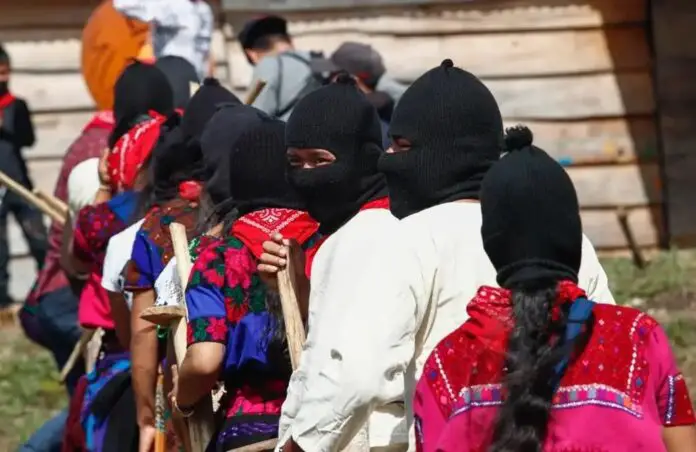With a massive and multigenerational celebration, the commemoration for the 30th anniversary of the armed uprising of the Zapatista Army of National Liberation (EZLN) began, to which thousands of support bases from all regions under its influence arrived, as well as people, collectives and organizations from Mexico and twenty countries, mainly from Europe.
The cultural days started on December 30 and continued in the morning and afternoon of the last day of the year at the Caracol “Resistance and Rebellion: A New Horizon”, inaugurated 3 years ago in the town of Dolores Hidalgo, Ocosingo, one of the seven municipalities where the EZLN made its presence on the morning of January 1, 1994.
Gigantic and colorful blankets announce the visitors’ arrival to the rebellious land. “Wake up! sleepyheads. It’s close. Only 5 kilometers to get to the Caracol Dolores Hidalgo”. “Wake up little brother, little sister, ready with your passport, credential, CURP and bank account. We are missing a kilometer to get there”. And then, just about to: “What did you come for? Are you in or not?”
The welcome message at the entrance of the Caracol refers to the theme of the celebration advanced in the last of a score of recent Zapatista communiqués: “Common land. No man’s land”, in which it was announced that the material basis of the new stage of Zapatismo will be the “non-ownership” of the land, that is, the establishment of extensions of recovered land “as of the common” in which there are no commissioners, agents, companies, ejidal authorities, or state ones.
A hill of mountains surrounds the Caracol to which those who defend the water of the Los Volcanes region, in Puebla; Mayans who oppose the newly inaugurated train in the Yucatan Peninsula; Purépechas from Cherán; Otomis living in Mexico City, among other peoples of the National Indigenous Congress who share the space with French and Spanish unionists, dozens of German activists, representatives of Greece, Belgium, Finland and various Latin American countries.
The party is cheerful and bright and has as its main protagonists hundreds of children and young people from inside and outside. The host muscle is composed of more than four generations, but it is those who were born after the uprising who are in charge of the plays, dances and musical numbers with which they recreate the three decades of history of their autonomy.
The Zapatistas summarize with dances part of their public life inside their communities. The first 10 years of autonomy, from the uprising to the birth of the Good Government Councils, in 2003. The next 10 years, until 2013, which were to learn the importance of generational relief. And from 2013 to date “it was to verify, criticize and self-criticize errors of functioning, administration and ethics”. But beyond the stages, Zapatismo arrives alive, young, stubborn in not walking alone.
At the end of today’s day, just at zero hours, the Zapatistas will offer the official speech of the 30th anniversary of what they have called “the armed uprising against oblivion, against death and destruction”.
Source: La Jornada







